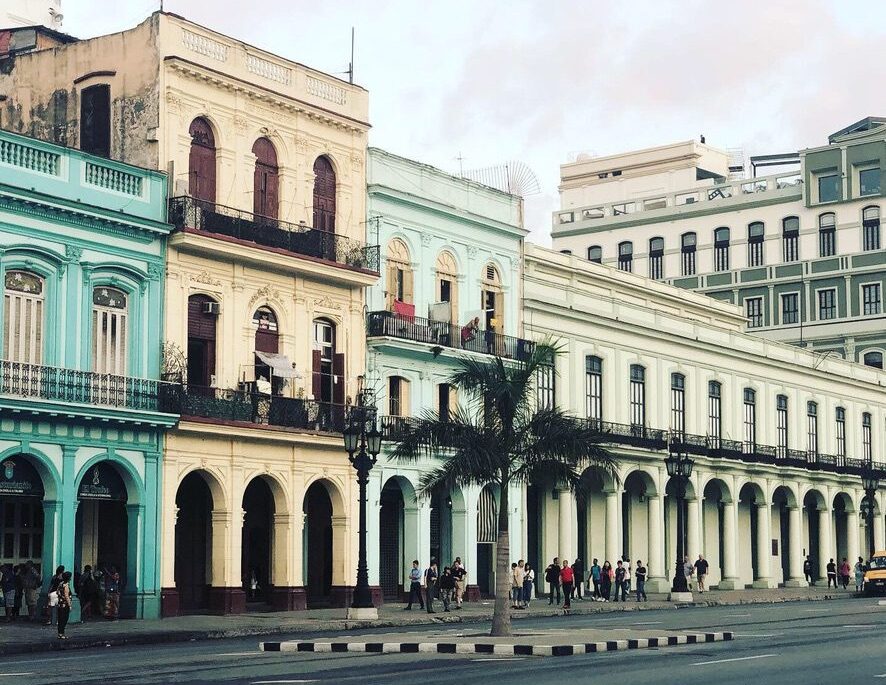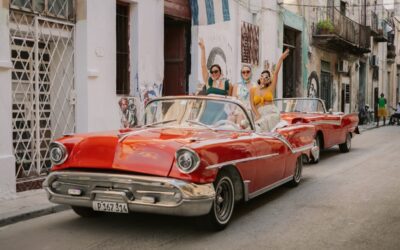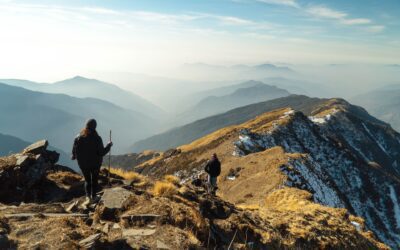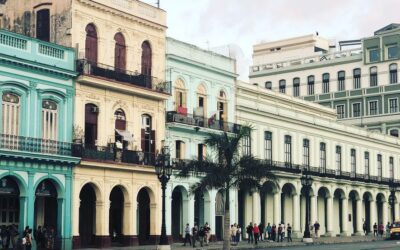Last updated on March 23rd, 2024
Featured image: Cuban woman smoking a cigar. Use these tips on your next solo trip to Cuba | Photo by Adobe Stock
Solo travel tips to make the most of your trip to Cuba
by Donna Starr
Journeywoman Donna Starr lives in San Diego. She is a writer, artist, photographer and online teacher of TEFL Business English to foreign students. Her garden buzzes with dive-bombing hummingbirds, raucous crows, a wonderful Mockingbird diva and a family of very bossy squirrels. Donna is the author of Cuba for Mama: A Daughter’s Journey 2016: Travel Tales & Tips. We asked her advice on how to prepare for a solo trip to Cuba. Donna writes…
I’d always been fascinated by Cuba, having never visited a Communist country before. An ageing black and white photo from 1940 of my great-grandparents in Havana still sits on my mother’s desk; their promise to take her when she was older was one that could never be fulfilled. My mom’s in her mid-80s now and she sports an artificial knee. Today her adventurous travel spirit must be satisfied by hearing about my many travel adventures. I’m an English teacher and once the opportunity to visit Cuba presented itself (via the new guidelines for U.S. visitors), I knew I had to go for both of us; to see this time-warped treasure for what it was, in all its unique beauty and sadness.
What’s Cuba like today? I had no idea. I began my internet search and discovered current information on Cuba was difficult to find. I located one group, Jakera Cuba that offered to organize your trip prior to you leaving the U.S. They coordinated lodging and some meals and an itinerary for learning and volunteering, all for a reasonable weekly charge (even payable via PayPal). Having some structure, my lodging secured and a ‘hub’ to take daily Spanish classes, cultural walks and meet other volunteers and world travellers appealed to me. I organized my flight and off I went for a whole month of solo experiences. Here are my tips to help you plan your own journey.
Tips for taking a solo trip to Cuba
Prepare well – Do your research before going! This is critical because the internet in Cuba is slow, expensive and difficult. A good travel guide will list many of the key sights to see (I recommend the one by Lonely Planet). Several organizations offer programs for Cuba including Jakera Cuba, GeoVisions, Road Scholar, and more.
Cell phones – U.S. cell phones don’t have service in Cuba at this time. However, I recommend taking your phone to get on the internet occasionally. You can use it as a camera and an alarm clock as well. I also brought my iPad with an SD memory card reader attachment and uploaded my photos on to my iPad. In general, I limited myself to two to three hours. a week of internet time. It was a welcome vacation from technology!
Internet – is not available widely in Cuba. Only posh hotels downtown have it available. To use the internet anywhere – you need a scratch-off coded internet card from Etesca. Etesca has an office on the main drag (Obispo Street) in old town Havana (la habana vieja). You queue in the line (which is often long) and wait, much like waiting at any government office. Slowly you are ushered into the building to wait a bit longer, the ‘tellers’ finally call you up and you can then buy one-hour cards to use. Bring your passport with you, it is essential. They won’t give you cards without it – it’s $2 CUC an hour (more on money later). Buy as many cards as you think you’ll want – remember, the lines are long so you don’t want to have to keep coming back. And yes, Big Brother is watching – remember your passport number will be attached to the code you input for internet usage. P.S. posh hotels offering internet will also sell you cards but it’s more expensive, $3-5 CUC an hour. Sometimes just to get off the street and onto comfy upholstered seating, I’d go into the nice hotels and sit in their lounge, soaking up the A/C and atmosphere while using my internet time. I’d order a beer and relax and recharge.
Support the people – Stay at Casas Particulares, not government-owned & controlled hotels. Casas Particulares are the Cuban answer to Air BnB, with Cubans offering a bed and bath in their home. They are MUCH cheaper than hotels, averaging $US25-40 a night. The hotels are really expensive anyway and to get a real people-to-people experience, you need to stay with Cubans! Jakera Cuba organized my Casas for me, I paid a weekly fee prior to leaving the U.S. so it was great. If you want a private room (recommended) make sure you are very clear about that prior to leaving. Once you’re in Cuba, it may be difficult to organize changes and you may end up with roommates!
Meals can be pricey – I had breakfast and lunch included at the Jakera hub so I just had dinner to concern myself with. However, Cuba is not cheap! Hotels (if you go that way) are expensive, budget $20-25 CUC for each meal at least if eating out. The meal might be $6-12 CUC but you still have drinks $3 CUC each+ and the waiter and band to tip. I often just ate an appetizer. I brought a plastic protein shaker and used it often with boiled (filtered) water to make protein mix shakes and miso soup. Teabags are also a wise choice (and great gifts) to bring. I made sun tea by the pitcher, grateful for the unsweetened beverage. Bring a Tupperware container to bring back leftovers from restaurants. Waiters will just look at you blankly if you ask for a “doggie bag”. No such thing there. I also always bring eating utensils and moistened towelettes when I travel.
What about the food? – The food wasn’t stellar, sorry to say. I’m a veggie, so white rice & black beans were on every “veggie” plate. I didn’t see any whole grain anything from bread to rice. If you like something more than cooking oil and white vinegar to dress a salad, bring a little bag of spices as I did. Expect lots of deep-fried foods, highly sugared drinks, white flour and sugar. You can get some cheese at the market so picnic dinners were my thing. The fruit is awesome, I had smoothies every morning and saved some for my happy hour (add a shot of rum!) The good news is that I walked a lot, drank lots of beverages, ate small bits and lost ten pounds the month I was there!
Power up – Bring your extra plugs and cables! Rooms may be nice, but many have only a plug or two that functions properly. Bring USB plugs and multi-prong plugs for all your devices. Cables might be difficult to replace or find in Cuba so if the gadget is essential, bring a backup. Cuba uses the same wall plugs as the U.S. so that’s a relief, no adapters needed for North American travellers. The electricity shut off a few times (for several hours) when I was there, so bring a flashlight or have a candle and matches ready and easily accessible.

Colourful and historic buildings on the streets of Cuba / Photo by Carolyn Ray
Rum, sweet rum – Rum (Ron in Spanish) is well-priced and the price is the same no matter where you buy the bottle, so load up at the airport at the Duty-free shop when leaving. The older the rum the better. I loved Canay and Santiago but Havana Club is the government’s own brand and there is a rum museum down by the waterfront. The museum is a fun tour, but the groups are LARGE. Bacardi, the original success story of Cuba was ousted in the 1950s and exiled to Puerto Rico to make their rum. Interesting story, that. Recommended read: Bacardi and the Long Fight for Cuba by Tom Gjelten. 16.
Music – it is everywhere and the familiar Cuban beat is distinctive. There will be live bands and music in nearly all cafes and other social venues. The bands will walk around with a basket for tips and selling CDs. The CDs are all one price – $10 CUC – don’t be cheap, buy the CD.
Dance – Don’t miss this opportunity to polish your salsa dancing skills. There are many dance schools in Havana and it’s not pricey to take classes. I took dance at the Casa de Son in Havana. At the Floridita Hotel and some other hotels, they have Taxi Dancers, fellows who will dance all night with you for about $20 CUC. Organize it ahead of time. In Trinidad, I took classes from Cuban Rhythms – Yusel was the teacher. (Calle Jesus Menendez #51, Cell: +53 130 188) There is also a Spanish teacher at this same location, ask for Yoli. ([email protected]) She speaks English and Spanish and can tour you about as well as teach Spanish. Cell: +53 5412 6782.
It’s noisy! – Bring earplugs or an eye mask if you need to block out sounds and light to sleep. The roads outside my first Casa were being jackhammered from dawn to late afternoon! There is a lot of construction going on in Cuba and it is not a swift process (your sturdy shoes and flip flops with thick soles will come in handy in these areas)
Weather – It’s HOT and HUMID most of the year. There will be days when showering seems redundant. Bring lots of bandanas and tie one to your bag to wipe your brow. Leave them behind if you like – they are coveted by many and will be appreciated. 17. Water – Bottled water is available widely, about $1-2 CUC a bottle. Many of the Casas will have boiled or filtered water available. Bring a good water bottle, fill it from big bottled ones. The water in your Casa may sometimes shut off without warning so make sure to not take it for granted, shower when you can.
Exchanging Money – When at home, figure out approximately what you’ll need for a spending budget (that’s why it was great to be able to pre-pay for lodging and two meals prior to departure). Your U.S. drawn credit cards are useless in Cuba, so you’ll have to bring CASH to last the whole of your trip and guard your funds closely. U.S. funds take an extra 10% hit (in addition to the conversion fee) so it pays to convert your U.S. money to Euros, Canadian money, whatever prior to getting to Cuba. Convert what you need weekly. Remember conversion to Cuban money is a one-way street. Spend your last Cuban dollars when exiting at the duty-free shop in the airport.
Weather – Check the weather forecast before leaving and bring appropriate clothes, pack extra shoes and clothes if needed and leave what you don’t need or use behind. The Cubans are grateful for clothes and good shoes and flip flops (I left a few hooded sweatshirts behind). Reminder – You might need a light jacket in the evenings at any time of year.
Be culturally correct in Cuba…
Take note…
Unless someone informs you of these two simple facts you can easily offend.
#1. It is against the law to take photos of military personnel.
#2. It is considered extremely rude to blow your nose in public.
Be generous – Donativo (donations) are a wonderful thing to add to your luggage. Good items to include are bilingual children’s books (rare here), small toys, art supplies, old cell phones, DVDs or CDs and clothing all make great donations. You can drop them off at Jakera’s hub in central Havana and they will be happy to get them distributed to the appropriate agency. Look here: jakeracuba.com. However, any open traveller will find special new friends to give their gifts to, it’s especially nice to leave a little something for your Casa Particular hosts. I left a nice bag of mixed nuts, a box of tea and chocolates. For a list of other donations, I’d suggest seeing the end of my book, Cuba for Mama. On the Prado Sunday afternoons, there is an art fair and one teacher will have a table set up for teaching kids. If you’ve brought art supplies, take the teachers to the side and give them the goodies for them to distribute to the kids. (I brought little watercolour palettes and crayons which were appreciated.)
Be a Good Ambassador – There aren’t a lot of U.S. visitors in Cuba yet (traveller vs. tourist) but no matter where you are visiting from, kindness and courtesy is a two-way street. Speak Spanish if you can (try!), engage Cubans in conversations, be open-minded and open-hearted.
Flights from the U.S., in particular, – In terms of flights from the U.S. to Cuba (as of summer 2016) these are still up in the air (literally). I flew out of nearby Tijuana. AeroMexico lets you check 2 bags FREE (up to 50 lbs. each) so I loaded them up with donations and carried on my small bag. You also get peanuts, meals and beer/rum on the flight as well. Deal!
Expect mosquitoes! – If you’re off to the country bring bug spray! I brought a large bottle and put some in a smaller plastic spray bottle to carry each day. I left the remainder behind for my Cuban friends. Which brings me to…
Fumigation! – Yes, they fumigate homes in Cuba for mosquitoes. A troupe of military workers walked the neighbourhoods in Trinidad and Havana weekly, going inside all the homes and spraying a diesel-powered plume of insecticide inside each home. Folks and pets all go outside, cover food inside prior to the fumigation patrol. It’s loud, it smells bad and who knows what is in there – if you’re chemically sensitive, keep that in mind.
Medicines – I don’t take much more than vitamins daily, but I also brought Excedrin (headaches), Immodium A.D. (Diarrhea), Aveeno soap (anti-itch), bandaids and moleskin. I didn’t even eat the meat and I had at least two days of the runs, so the Immodium A.D. came in handy. If you do get bug bites, anti-itch cream is needed. As in any humid climate open wounds can get easily infected so include Polysporin. Bring bug spray and sunscreen.
Unwelcome Attention – There are some fellows and gals that will follow you, trying to commandeer you to a certain place or restaurant – or offer to help you by following you about. Bear in mind, they expect a tip or will likely stick you with the check if they join you.
Safety – Cuba is a safe place. I never felt uncomfortable walking alone on the street – but I used common sense because there is no accounting for anti-social behaviour. Don’t flash wads of money, keep your purse close (or use a travel purse strapped across your chest), avoid lonely deserted streets at night. As a solo female, I’d get some catcalls and a few fellows would walk beside me, chatting about becoming my boyfriend. I’d surprise them by speaking Spanish. If anyone’s bothering you, just say, ‘no, gracias.’
Cuba for Mama: A Daughter’s Journey…
 Written by Donna Starr, Cuba for Mama answers the question, What’s Cuba like today? Many travelers want to know. The author offers over 22 insightful stories, many photographs, helpful travel tips & concerns all drawn from a people-to-people mission she took to Cuba during the spring of 2016. This is the real Cuba as she experienced it, one that Obama probably did not get to see. This isn’t a travel guide with itineraries and maps and dry details. Cuba for Mama offers practical tips and ideas for the best things to pack, donations to bring, how to get to Cuba and what to expect when you are there. To listen to a chapter of the book, click here. To order the book, click here.
Written by Donna Starr, Cuba for Mama answers the question, What’s Cuba like today? Many travelers want to know. The author offers over 22 insightful stories, many photographs, helpful travel tips & concerns all drawn from a people-to-people mission she took to Cuba during the spring of 2016. This is the real Cuba as she experienced it, one that Obama probably did not get to see. This isn’t a travel guide with itineraries and maps and dry details. Cuba for Mama offers practical tips and ideas for the best things to pack, donations to bring, how to get to Cuba and what to expect when you are there. To listen to a chapter of the book, click here. To order the book, click here.
Read More From Cuba
How Solo Women Can See the ‘Real’ Cuba, From a Woman’s Perspective
How solo women can see the ‘real’ Cuba and support women-owned homestays, restaurants and markets, at a time when tourism is desperately needed.
The Hotlist: 12 of the Coolest Small Group Tours for Women in 2024 From our Women’s Travel Directory
From Cuba to Mongolia, these unique small group tours from our Women’s Travel Directory will connect you with people, places and wildlife.
Wanda St. Hilaire’s Memoir Explores Solo Travel, Love and Adventure in “The Cuban Chronicles”
The JourneyWoman Book Club heads to Cuba as solo traveller Wanda St. Hilaire explores love and adventure in her 2009 memoir, “The Cuban Chronicles.”








0 Comments
We always strive to use real photos from our own adventures, provided by the guest writer or from our personal travels. However, in some cases, due to photo quality, we must use stock photography. If you have any questions about the photography please let us know.
Disclaimer: We are so happy that you are checking out this page right now! We only recommend things that are suggested by our community, or through our own experience, that we believe will be helpful and practical for you. Some of our pages contain links, which means we’re part of an affiliate program for the product being mentioned. Should you decide to purchase a product using a link from on our site, JourneyWoman may earn a small commission from the retailer, which helps us maintain our beautiful website. JourneyWoman is an Amazon Associate and earns from qualifying purchases. Thank you!
We want to hear what you think about this article, and we welcome any updates or changes to improve it. You can comment below, or send an email to us at [email protected].